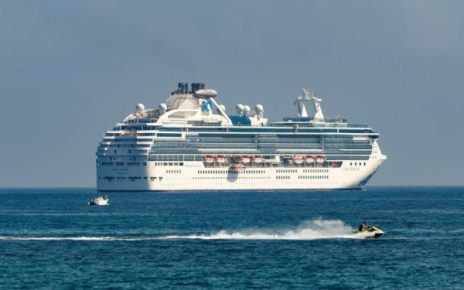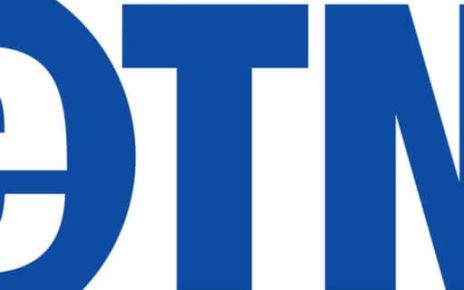Wine and Spirits: Economic Engine
If you do – then you must have been spending a few days at Vinexpo/Drinks America (Javits, NYC). If you missed this event, immediately put it on your to-do list for 2024.
I am not alone in applauding this impressive program. I was able to sip my way through wines/spirits presented by over 440 exhibitors, representing 32 countries and considered to be the largest business-to-business trade show in the universe, dedicated to wine/spirits professionals in North America. If you buy, sell, write, review, or drink – this should be added to a to-do list.
The global alcoholic/beverage market is estimated to be valued at $560.04 billion (2022). The growth rate of this market is projected to be 9.4 percent with an estimated value of $802.02 billion by 2026. As of 2022, revenue in the alcoholic beverage segment in the US reached $261.1 billion with a projected growth (from 2022-2025) of 10.51 percent per year.
This two-part series includes:
Part 1. Spirits Fuel the Economy
An alcohol trend in 2023 suggests consumers are pivoting to spirits over beer as they are looking for “adventures” available through new cocktails. Successful brands will balance something new and wonderful without going over the edge…consumers want both familiar and unique.
Part 2. Importance of Wine? Win/Win
A review of the wine industry and how the new demographics and psychographics of the consumer is pushing the sector to morph every aspect of the business, literally from the ground up and through to the consumer.
Spirits Fuel the Economy

Our Drinking Makes Executive Happy Campers
People are drinking – at home, in bars, at restaurants, at the beach, after skiing and swimming, after a test, before a date, during a date, and after a date…there appears always to be an occasion and an opportunity to pour a drink.
Growth in spirits started approximately 13 years ago and, after years of steady increases, spirits have overtaken beer although beer continues to hold 41.9 percent of the market. Spirit supplier sales in the US increased by 5.1 percent in 2022 to a record $37.6 billion adding up to 305-million-liter cases. Most of the market increase came from sales of high-end and super-premium spirits led by tequila and American whiskey where consumers prefer to sip better, not more.
Vodka produced the most revenue at $7.2 billion although sales in 2022 were flat. Sales of tequila/mezcal increased 17.2 percent ($886 million) totaling $6 billion. Sales for American whiskey increased by 10.5 percent ($483 million) to reach $5.1 billion. The American whiskey category includes bourbon, Tennessee whiskey, and rye whiskey.
Premixed cocktails led as the fastest-growing spirit category including premixed cocktails, and ready-to-drink spirits products increased by 35.8 percent ($588 million) to reach $2.2billion.
Sales of spirits in restaurants and bars (on-premises sales) recovered from the pandemic but remained 5 percent lower than 2019 levels. Sales from this source represent 20 percent of the US market.
Off-premised sales volumes at liquor stores and other retail outlets remained steady in 2021/2022 after experiencing sharp gains during the pandemic restrictions in 2020.
Who Drinks?
California leads in the consumption of alcohol by volume with 85.7 million gallons consumed in 2020 while Texas, Florida, New York, and Illinois fill out the list of the top five. If drinking is not part of your DNA – move to Wyoming, Alaska, and South Dakota… states that consume the least alcohol.
Although it may appear that drinking is increasing, data shows the opposite. In 2021, Gallup, Inc. reported that 60 percent of US adults consumed alcoholic beverages, a decrease from 65 percent reported in 2019. The average number of drinks consumed in the previous seven days also decreased in 2019 with consumers aged 18+ years drinking, on average, 4.0 drinks in a seven-day period; however, in 2021 that average was 3.6 drinks.
Men drink more than women (64 percent versus 57 percent) with people 35-54 y/o consuming 70 percent of all alcoholic beverages, compared to both younger (60 percent) and older consumers (52 percent). GenZs (born 1997 to 2013) stated they did not purchase alcohol because it impacted negatively on their mood, level of alertness, and social media image (Numerator.com).
A Gallup survey (2021-2022) determined that 80 percent of adults 18+ living in households earning $100,000+ drink, far exceeding the 49 percent of those earning less than $40,000. The rate among middle-income earners falls about halfway between, at 63 percent.
Culture matters when talking about drinking as white adults 18+ (68 percent) are more likely than Hispanic (59 percent) or Black adults (50 percent) to report they drink.
When People Start to Drink
Forget the law, the average age of the consumers’ first drink in the USA is approximately 14-15 y/o. The average person has explored alcohol for the first time in their first or second year of high school. By college, almost everyone has had at least tried alcohol, even though they know it is illegal.
About one in 10 Americans (12 percent) claim they had their first alcoholic drink before the age of 13 (YouGov Omnibus). Why are teenagers drinking? Studies suggest the “kids” try it because it is illegal and they are curious; prohibiting anything makes people want to try it. Another study found that peer pressure encourages drinking and, depending on the social group, may actually be the norm. Refusing to drink may not be an option if the “kids” want to remain in the group.
As we get older, we drink more often with 48% of people aged 55+ reporting drinking alcohol two or more times a week; 14% drink six or more times a week. However, we drink less on a typical drinking day with 24% of drinkers aged 55+ reporting drinking five or more units on a typical day when drinking; 52% have one or two units. Older adults are less likely to binge drink: 52% of drinkers aged 55+ reported never having more than 6/8 units of alcohol on a single occasion over the last year.
What Are They Drinking?
In 2022 bottled water accounted for roughly 25 percent of beverage consumption in the US, making it the most consumed type of beverage for the year. The least preferred beverages (2022) were value-added water and energy drinks.
The most iconic American distilled spirit is Bourbon. Corn-based whiskey has been produced in the US since the 18th century and is recognized by the US Congress as a “distinctive product of the United States.” Before Bourbon, Applejack was considered the American drink of choice. Starting in the 17th century, American colonists learned how to increase the potency of their homemade hard apple cider by allowing it to freeze outside and then separating the liquid from the ice; the process was called “jacking.” The resulting “applejack” was a form of brandy, a less-refined and sweeter version of French calvados.

Chart courtesy of vinepair.com
When to Drink?
Some claim there is nothing better than a daily drink and 29 percent of men and 19 percent of women surveyed claimed they drank during the day, each and every week; however, men are more likely to drink during the day, at least once a month.
A YouGov survey (2023) found that among US adults roughly one in six (16 percent) consider noon the earliest acceptable time of day to have an alcoholic drink on a non-working day; one in 10 (10 percent) stated 5 PM; one in eight (13 percent) determine that 6 PM or later is the earliest acceptable time, although nine percent say it’s fine to grab a drink before 10 AM. Men (13 percent) are more likely than women (7 percent) to drink at or before 10 AM. Young Americans (25-30) are OK with morning drinking before 10 AM (17 percent).
Where to Drink
Men tended to day drink most heavily at the beach and at concert venues, consuming 8+ beverages, on average, at these locations. Women consumed nearly 7 drinks, on average, at hotels and resorts. The finding might relate to the way in which alcohol plays a significant role in many spa experiences marketed primarily to women… some luxurious retreats offer endless champagne as part of the mani-pedi experience.
In the UK (2021), 80 percent of adults reported having an alcoholic drink at home, while 36 percent reported drinking at a pub, restaurant, or bar. Drinking with friends? Only 19 percent of the population surveyed reported drinking at a friend or family member’s house. Adults between 18-24 were most likely to have imbibed an alcoholic drink in a pub, restaurant, or bar.
In the Right Spirit
Spirits include vodka, rum, tequila, cognac, whiskey, etc. Gin is distilled from grains, vodka from potatoes or grains, brandy and grappa from grapes or wine, and rum starts with sugar cane and molasses.
Studies trace the roots of spirits back over 3000 years. It was several thousand years later that wine and beer were first produced. The technology to produce spirits is complex (greater than wine or beer). Distillation was known in ancient Chinese, Indian, Greek, and Egyptian societies, but it took innovations by the Arabs to distill alcohol. In the beginning, this alcohol was used for medicinal purposes and it was not until the Middle Ages that spirits became a popular beverage.
The Industrial Revolution created a large consumer market and reduced the cost of spirits, contributing to increased consumption and alcoholism. Governments stepped in to the spirits marketplace to reduce excessive drinking and to raise taxes. Over the past 50 years, the share of spirits in global alcohol consumption increased from 30 to 50 percent.
In previous decades that was growth in emerging markets including China and India. Recent developments in the industry include premiumization, the growth of craft spirits, and the introduction of terroir for spirits.
Cheers To You
Although “spirits” represents approximately 50 percent of global alcohol consumption, this sector is under-represented in coverage in relation to wine and beer. However, it is a bright and cheery forecast for the alcoholic beverage industry with American whiskey continuing to be an important beverage. Innovation will be important and industry leaders will have to find ways to connect with young drinkers who are aging into the market and looking for eco-friendly, low-sugar options. New consumers want a beverage that is fresh, light, herbal, and botanical with citrus notes. The drive to be innovative and creative will benefit everyone along the supply chain, including consumers.



© Dr. Elinor Garely. This copyright article, including photos, may not be reproduced without written permission from the author.





